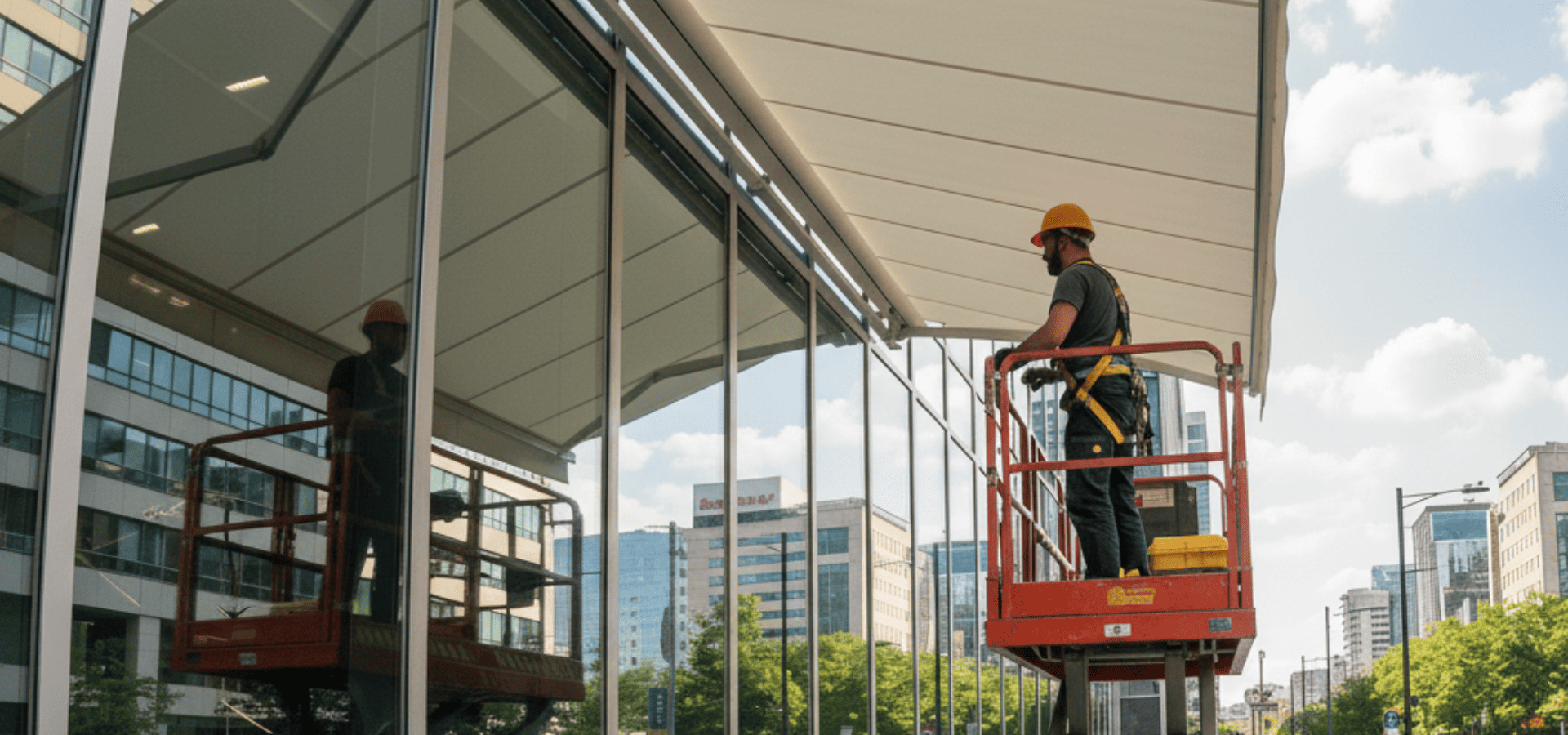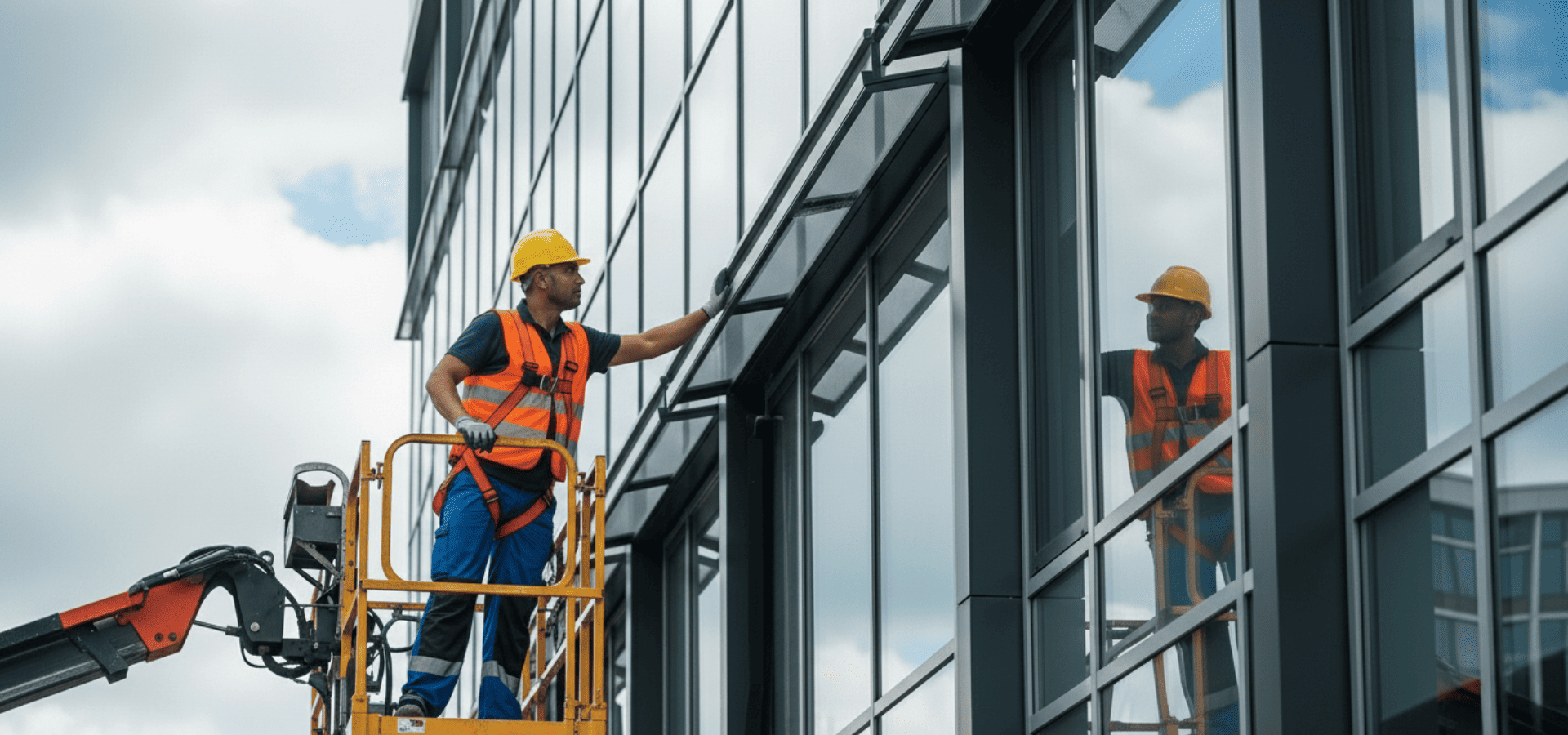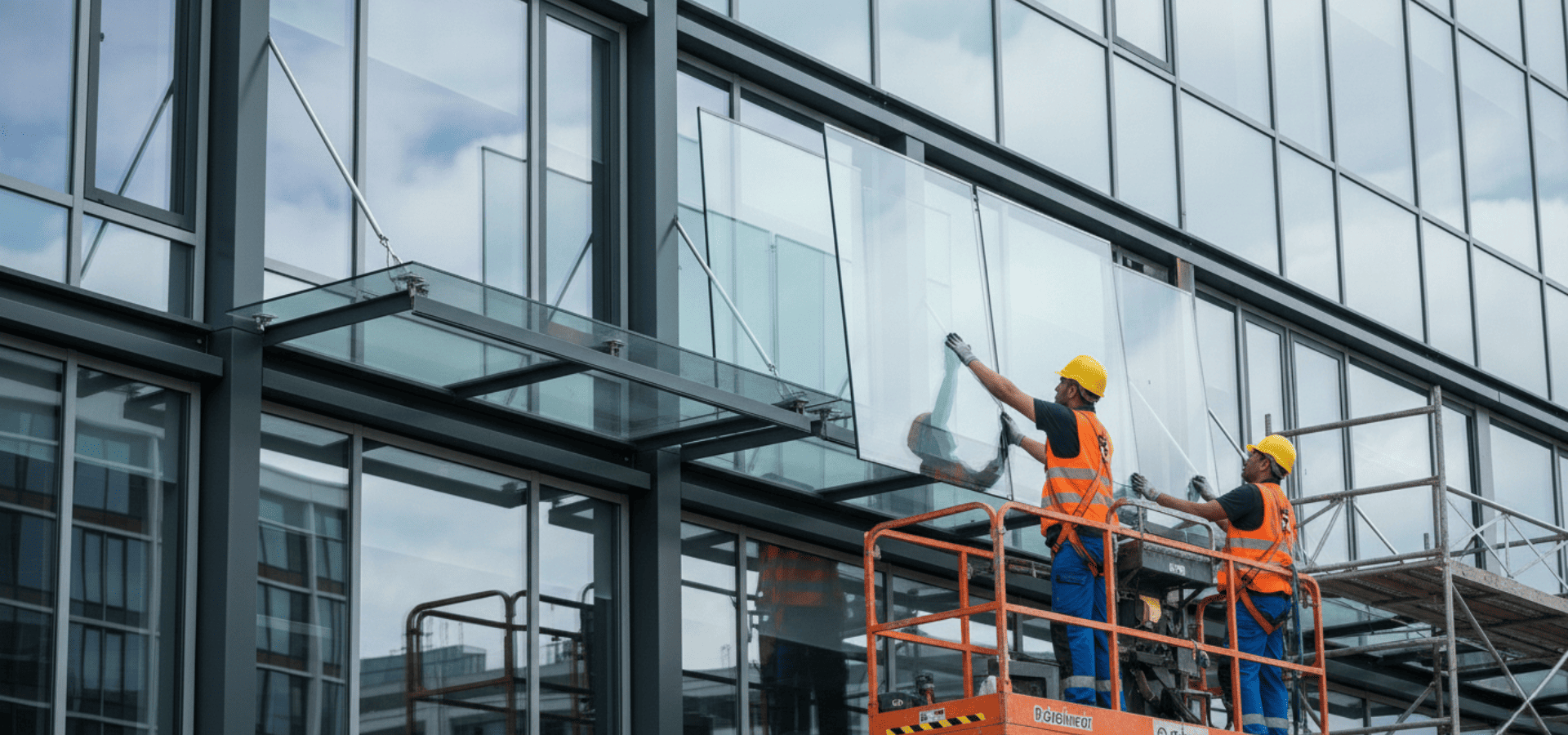How To Install Awnings On Glass Curtain Walls
Glass curtain walls bring a sleek, ultra-modern look to a building, and you'll often see them in office towers, shopping malls, airports, and so on.
The problem is, glass curtain walls aren't the most sturdy structures. That's why unlike regular walls, they're not meant to support the building’s weight in any way.
As such, you can't simply drill some holes into them, attach brackets, and expect the glass to bear the weight of the awning.
It's also not as simple as just attaching the awning to the metal beams joining the glass panels, because those metal beams are usually too thin to support heavy weight.
Installing awnings on glass curtain walls requires a different approach from regular walls, and in this article, we'll be going over the key considerations, as well as exactly how to install awnings onto glass curtain walls.
What Are Glass Curtain Walls?
For those unclear as to what exactly glass curtain walls are, they’re essentially glass walls, except with one key difference from regular glass walls — they’re sleeker.
Regular window glass walls have the glass built into the wall, so the glass is actually an inherent part of the wall.
Glass curtain walls, on the other hand, are actually attached onto the building structure, kind of like attaching the skin over the hole in the building.
Regular window glass walls use thicker metal beams (mullions) to join the glass panels together, because the glass panels are thicker. The glass panels and the metal beams need to be thicker and more robust because they need to resist wind loads, which can be quite substantial at heights.
Glass curtain walls use thinner mullions that make the overall glass facade look sleeker and more seamless. The reason they’re able to function with thinner mullions is that they use high-strength aluminium extrusions, and they’re designed to flex slightly without cracking.
These parts are expensive to produce though, so glass curtain walls, while more contemporary-looking, also cost more.
Key Considerations Of Awning Installation

If you’re looking to install awnings for your glass curtain walls to make your space more comfortable, keep the sunlight out, and spend less on cooling, here’s what you need to consider.
Mounting Area & Method
Glass is actually drillable with the right gear, but even if you did drill through the glass and have the holes for the brackets, the thin glass wouldn’t be strong enough to hold the awning’s weight.
The thinner aluminium mullions can hold the weight of lighter awnings, so if it’s a lighter fabric awning and it isn’t too big, you can attach it to the aluminium mullions.
But even then, given that they’re hollow and slim, careful planning and installation are still needed to ensure that they can bear the awning’s weight, especially in high winds. Furthermore, drilling needs to be done with the utmost care, because there’s very little clearance, and a single slip of the hand could result in the drill touching and shattering the glass.
As such, with such careful engineering needed to mount the awning to the mullions, what most awning contractors do instead is to connect to the building’s primary structure. This can be the concrete slab edge, the beam at the top of the curtain wall, and so on.
The challenge with this is ensuring proper sealing afterwards, or else the small holes created by the awning installation could allow water to leak into the building.
Glass curtain walls are relatively fragile and weak structures, so even the awning contractor may not have the knowledge to make a sound decision as to how to mount the awning. In such situations, a structural engineer may be called in to assess and determine the best way to attach the awning securely.
Leaking
As we mentioned earlier, glass curtain walls aren’t actually integrated with the building. They’re attached to it.
This means that around the edges, sealing and waterproofing have to be carefully carried out, and drainage pathways need to be in place to prevent leaking.
The glass curtain wall should have these in place, but the awning installer needs to make sure to seal up any holes he or she creates with the necessary sealants and flashing.
The awning contractor also has to ensure that the awning doesn’t block existing weep holes or drainage gaps.
Leaking isn’t just annoying. It can cause mould and water damage, and over time even cause structural damage. That’s why waterproofing is of the utmost importance, and you need to make sure to engage a contractor who has the necessary knowledge and experience to handle this aspect.
The Installation Process
With the complexities of glass curtain awnings, you should be leaving it to the professionals. But it’s still important to know what to expect, so that you can supervise and ensure things are done according to proper procedure.
Step 1: Site Assessment

This is where the contractor assesses the glass curtain wall and identifies the best points to mount the awning.
Step 2: Reinforcement (If Necessary)
If it’s a light awning and the contractor is attaching it to the mullions, there’s a good chance that he or she will be reinforcing it first.
This can come in various forms, depending on what the awning installer deems necessary.
It could be inserting a wood or metal block inside the hollow mullion to strengthen it, using toggle bolts that expand behind the aluminium, or even adding a steel sub-frame between two sturdy structural columns, to spread the awning’s load.
Either way, these all serve to ensure that when the awning is installed, the support won’t flex or fall.
Step 3: Mounting The Brackets
This is where the contractor drills into the frame or slab to mount the brackets.
This step must be done with extreme care, because a single accidental hand slip could result in the entire glass panel shattering. Besides the monetary loss, more importantly, when these glass shards fall onto the people below, it could cause serious injury.
After creating the holes, the anchor bolts are inserted, and then the mounting brackets will be fastened to these anchors.
The size of the awning will determine how many brackets are needed. Smaller awnings may only need 2, while bigger, wider ones may need 3-4.
After all these are done, the contractor should seal the penetrations where they’ve drilled to prevent water from entering.
Step 4: Assembling The Awning

With the brackets in place, all that’s left to do is assemble the awning.
Depending on whether it’s a retractable or stationary system, this may require multiple people to hold it steady while securing it.
After installing the awning, the contractor will test it to see if it’s securely attached, and if it’s a retractable awning, they’ll retract and extend it a few times to make sure it works smoothly.
Conclusion
Awnings are a great way to keep the sun out and spend less on cooling bills.
But the last thing you want is to have the awning fall onto innocent passers-by, or the glass panels to shatter from the load of the awning.
That’s why proper, meticulous installation is paramount.
You’ll want an
awning contractor in Singapore who has experience installing awnings on glass curtain walls at height, and with a proven track record of success.
If you’re wondering where to find one, you’re in the right place! Uni Shades has been installing awnings for more than a decade, and we’re experienced in installing all sorts of commercial awnings.
Give us a call today to get your glass curtain wall awning project underway!


